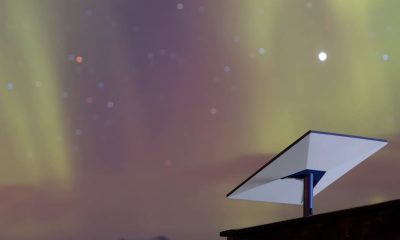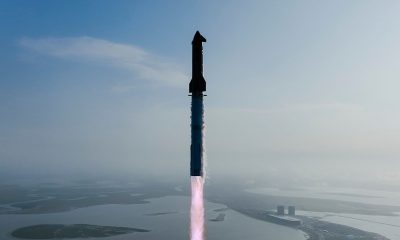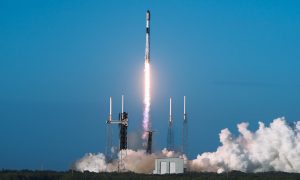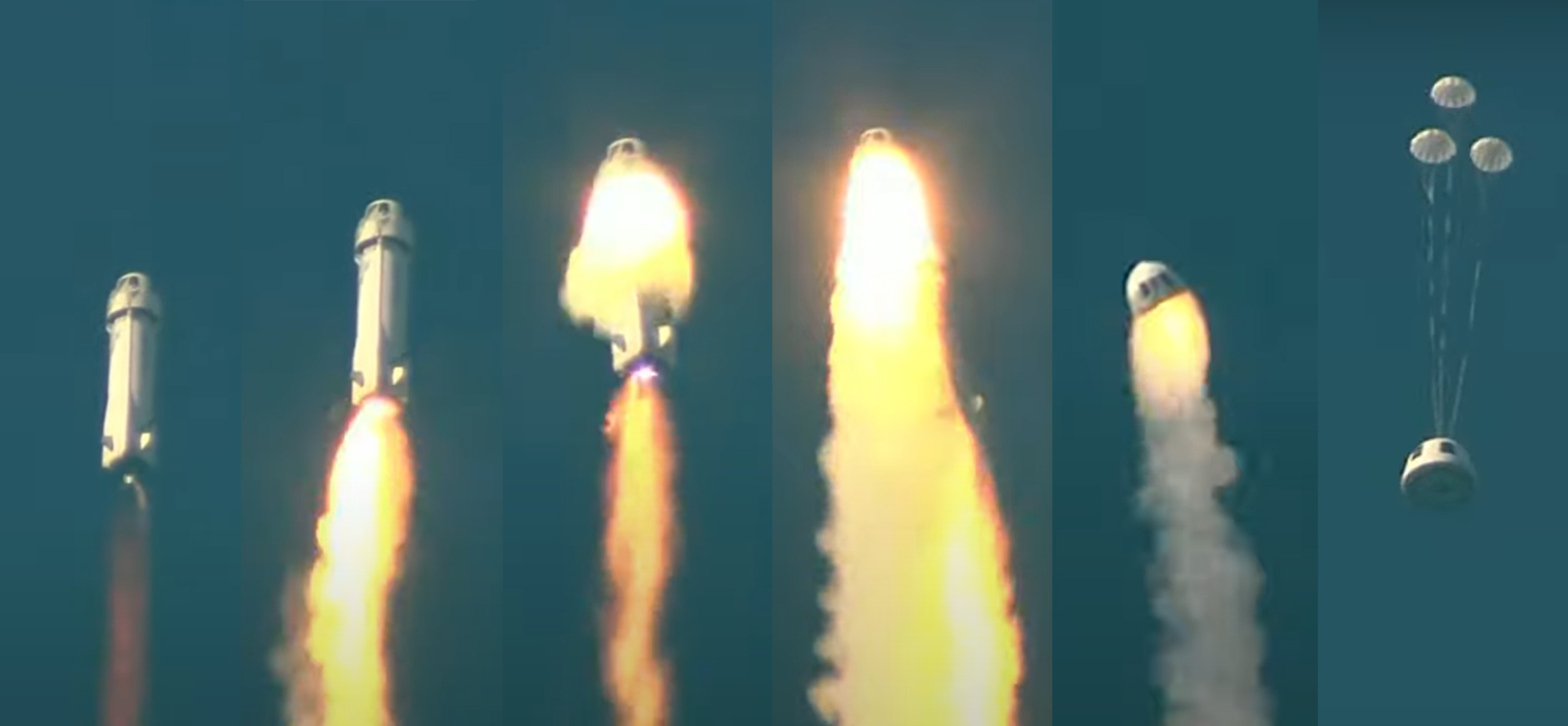

News
Blue Origin rocket launch fails after engine catches fire
Blue Origin’s suborbital New Shepard rocket suffered a catastrophic engine failure during its 23rd launch attempt, ending a seven-year streak of 21 successes.
Following a handful of mostly weather-related delays that pushed New Shepard’s 23rd launch about two weeks past its original August 31st target, the single-stage vehicle lifted off from Blue Origin’s Van Horn, Texas launch site around 10:25 am CDT (14:25 UTC) on September 12th. Measuring about 15 meters (49 ft) tall, 3.7 meters (12.1 ft) wide, and capable of producing about 50 tons (~110,000 lbf) of thrust with its lone BE-3 engine at full throttle, New Shepard only made it about halfway through its nominal powered ascent before catastrophe struck.
The first signs of trouble appeared about 62 seconds after liftoff in the form of flickers and flashes in New Shepard’s exhaust, which is normally almost transparent. Less than two seconds after the first seemingly harmless flash, flames unintentionally burst from New Shepard’s engine section and quickly surrounded its BE-3PM engine. Less than a second after that, the rocket’s aft and began shedding pieces and stopped producing thrust, triggering a solid rocket motor stored inside its deployable capsule.
About a second after the incident began, the capsule’s abort motor ignited and carried the suborbital spacecraft safely away from the failing New Shepard booster. The capsule ultimately coasted to an apogee of 11.4 kilometers (7.1 miles) – almost ten times lower than nominal – before descending back to Earth, deploying its parachute system, and safely touching down in the Texas desert scrub. Thankfully, NS-23 was only carrying experiments, and no humans were at risk. Had a crew of suborbital tourists been aboard, they would have likely been a little battered but otherwise completely unharmed.
..there is room for a lot of speculation ?– i did a frame by frame Picture – on the bottom row you can see some parts falling away. maybe the nozzle fell apart?!? pic.twitter.com/OOzPkPiX6G— Flo (@FloSpacenerd) September 12, 2022
While any failure of a rocket is unfortunate, the failure of a rocket nominally designed to launch humans can have even worse repercussions. However, thanks to the seemingly flawless unplanned performance of New Shepard’s abort system, it’s safe to say that the day could have gone much worse for Blue Origin.
The failure is still not going to do the reputation of Blue Origin or New Shepard any favors. It also invites less than favorable comparisons with SpaceX, a different spaceflight startup also funded and founded by a tech tycoon in the early 2000s.
Founded a year and a half after Blue Origin, SpaceX, in comparison, reached orbit with Falcon 1 in 2008. In June 2010, it successfully debuted Falcon 9, an orbital-class rocket roughly 20 times larger. In 2012, Falcon 9 successfully launched an orbital Dragon spacecraft which became the first private vehicle to dock to the International Space Station. In January 2015, it attempted to recover a Falcon 9 booster for the first time. In December 2015, one month after Blue Origin’s first successful New Shepard landing, SpaceX aced its first Falcon 9 booster landing.
Nine months later, Falcon 9 suffered a catastrophic failure during prelaunch testing in September 2016 and didn’t return to flight until January 2017. That is where, for the most part, the paths of Blue Origin and SpaceX almost entirely diverged – but not in any obvious way. Instead, after a successful suborbital launch in October 2016, New Shepard didn’t fly again until December 2017. In the roughly six years between October 2016 and September 2022, New Shepard completed 10 uncrewed suborbital launches, 6 suborbital tourist launches, and suffered one failure during another uncrewed mission – 18 total launches.
Despite suffering a catastrophic failure that destroyed a customer’s multimillion-dollar satellite in September 2016, SpaceX returned to flight four months later, completed 150 orbital Falcon launches without fail in the same period; debuted the world’s largest operational rocket, Falcon Heavy, and completed two additional launches with it; debuted Crew Dragon and Cargo Dragon 2 on Falcon 9; launched its first astronauts into orbit, launched its first operational astronaut transport mission for NASA, launched its first two Starlink internet satellite prototypes, launched another 60 refined Starlink prototypes, began operational Falcon 9 Starlink launches, built and launched more than 3000 Starlink satellites total; landed 130+ Falcon boosters, and reuse Falcon boosters 117 times.
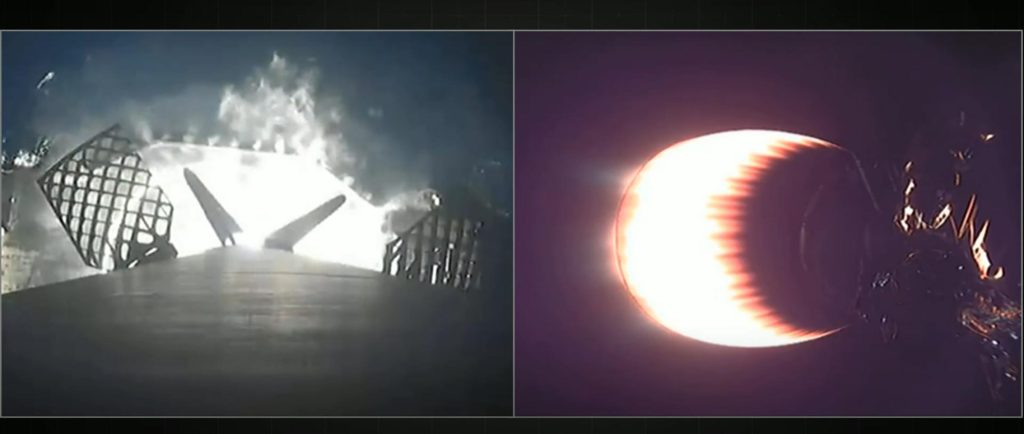
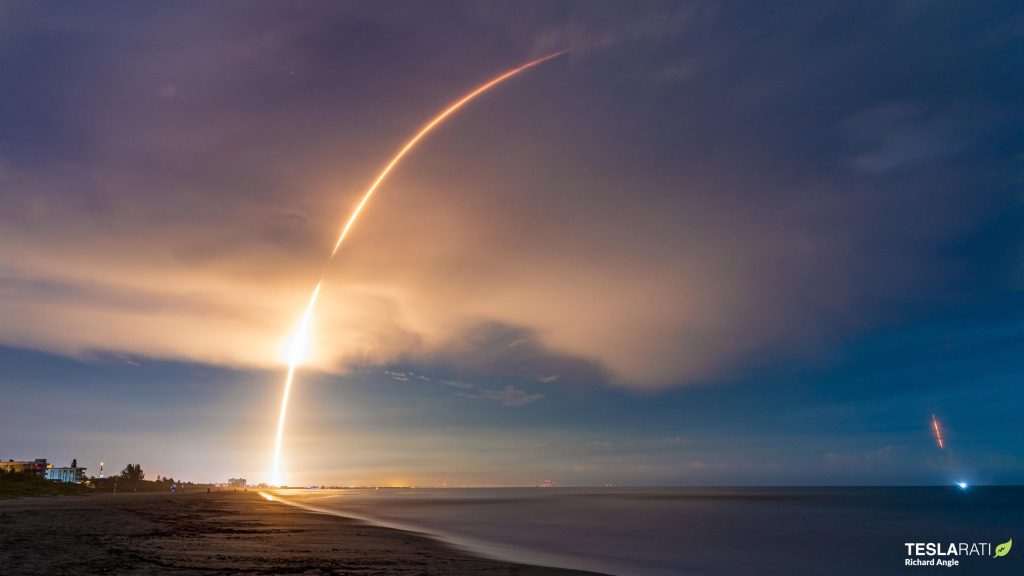
The differences could not be more stark or strange, given that both companies have been operating more or less side by side and working towards similar goals for as long as they’ve existed. To Blue Origin’s credit, the company managed a record six New Shepard launches – three carrying tourists – in 2021. NS-23 was its fourth planned launch in 2022, suggesting that it could have achieved a similar cadence this year if the mission had had a different fate. Instead, the launch failure has triggered an anomaly investigation that will search for the root cause and try to uncover shortcomings that will then need to be rectified before New Shepard can return to flight. Given that Blue Origin once went 15 months between successful New Shepard launches, it’s impossible to say how long that process will take.
In the meantime, the apparent failure of New Shepard’s BE-3PM engine could trigger investigations into Blue Origin’s other engine programs. While substantially different, BE-3U, a variant optimized for the upper stage of New Glenn, Blue Origin’s first orbital rocket, likely shares the most in common with New Shepard’s BE-3PM. BE-7, a small engine meant to power a Moon lander, could also be impacted.
Most importantly, Blue Origin is also in the midst of finally preparing two much more powerful and far more complex BE-4 engines for customer United Launch Alliance (ULA). Years behind schedule, Blue Origin completed the first two theoretically flightworthy BE-4 engines and began putting them through qualification testing earlier this year. It wants to ship those engines to ULA as soon as possible to avoid delaying the debut of the customer’s new Vulcan Centaur rocket. BE-3PM and BE-4 probably don’t share a single part, but many Blue Origin employees have likely worked on both programs, and the same Blue Origin leadership has certainly overseen both. As long as there’s any form of commonality, no matter how abstract, there’s always a risk that the underlying cause of problems in one program could be present in others.
Ultimately, it’s unlikely that there will be any serious connection. The New Shepard booster that failed on NS-23 was almost five years old and was flying for a record-breaking ninth time. It’s possible that Blue Origin was privately worried about the possibility of failure while pushing the envelope, but it offered no qualifications while discussing the mission. SpaceX CEO Elon Musk, in comparison, has almost always made it clear that failure is a possibility when the company attempts ‘firsts’ of any kind.
SpaceX recently launched and recovered the same Falcon 9 booster for the 14th time, setting its own internal record. As a result, that lone Falcon 9 booster, B1058, has flown as many times in the last 31 months as all New Shepard boosters combined have flown in the last 45 months.
Finally, while no company should be put in that position, Blue Origin deserves praise for its live coverage of the anomaly. Instead of immediately cutting the feeds, which would be what most providers would be expected to do during an operational launch, Blue Origin continued to broadcast views of the failure and provide live commentary until New Shepard’s capsule touched down well ahead of schedule.
News
Tesla UK sales see 14% year-over-year rebound in June: SMMT data
The SMMT stated that Tesla sales grew 14% year-over-year to 7,719 units in June 2025.

Tesla’s sales in the United Kingdom rose in June, climbing 14% year-over-year to 7,719 units, as per data from the Society of Motor Manufacturers and Traders (SMMT). The spike in the company’s sales coincided with the first deliveries of the updated Model Y last month.
Model Y deliveries support Tesla’s UK recovery
Tesla’s June performance marked one of its strongest months in the UK so far this year, with new Model Y deliveries contributing significantly to the company’s momentum.
While the SMMT listed Tesla with 7,719 deliveries in June, independent data from New AutoMotive suggested that the electric vehicle maker registered 7,891 units during the month instead. However, year-to-date figures for Tesla remain 2% down compared to 2024, as per a report from Reuters.
While Tesla made a strong showing in June, rivals are also growing. Chinese automaker BYD saw UK sales rise nearly fourfold to 2,498 units, while Ford posted the highest EV growth among major automakers, with a more than fourfold increase in the first half of 2025.
Overall, the UK’s battery electric vehicle (BEV) demand surged 39% to to 47,354 units last month, helping push total new car sales in the UK to 191,316 units, up 6.7% from the same period in 2024.
EV adoption accelerates, but concerns linger
June marked the best month for UK car sales since 2019, though the SMMT cautioned that growth in the electric vehicle sector remains heavily dependent on discounting and support programs. Still, one in four new vehicle buyers in June chose a battery electric vehicle.
SMMT Chief Executive Mike Hawes noted that despite strong BEV demand, sales levels are still below regulatory targets. “Further growth in sales, and the sector will rely on increased and improved charging facilities to boost mainstream electric vehicle adoption,” Hawes stated.
Also taking effect this week was a new US-UK trade deal, which lowers tariffs on UK car exports to the United States from 27.5% to 10%. The agreement could benefit UK-based EV producers aiming to expand across the country.
News
Tesla Model 3 ranks as the safest new car in Europe for 2025, per Euro NCAP tests
Despite being on the market longer than many of its rivals, the Tesla Model 3 continues to set the bar for vehicle safety.

The Tesla Model 3 has been named the safest new car on sale in 2025, according to the latest results from the Euro NCAP. Among 20 newly tested vehicles, the Model 3 emerged at the top of the list, scoring an impressive 359 out of 400 possible points across all major safety categories.
Tesla Model 3’s safety systems
Despite being on the market longer than many of its rivals, the Tesla Model 3 continues to set the bar for vehicle safety. Under Euro NCAP’s stricter 2025 testing protocols, the electric sedan earned 90% for adult occupant protection, 93% for child occupant protection, 89% for pedestrian protection, and 87% for its Safety Assist systems.
The updated Model 3 received particular praise for its advanced driver assistance features, including Tesla’s autonomous emergency braking (AEB) system, which performed well across various test scenarios. Its Intelligent Speed Assistance and child presence detection system were cited as noteworthy features as well, as per a WhatCar report.
Other notable safety features include the Model 3’s pedestrian-friendly pop-up hood and robust crash protection for both front and side collisions. Euro NCAP also highlighted the Model 3’s ability to detect vulnerable road users during complex maneuvers, such as turning across oncoming traffic.
Euro NCAP’s Autopilot caution
While the Model 3’s safety scores were impressive across the board, Euro NCAP did raise concerns about driver expectations of Tesla’s Autopilot system. The organization warned that some owners may overestimate the system’s capabilities, potentially leading to misuse or inattention behind the wheel. Even so, the Model 3 remained the highest-scoring vehicle tested under Euro NCAP’s updated criteria this year.
The Euro NCAP’s concerns are also quite interesting because Tesla’s Full Self-Driving (FSD) Supervised, which is arguably the company’s most robust safety suite, is not allowed for public rollout in Europe yet. FSD Supervised would allow the Model 3 to navigate inner city streets with only minimal human supervision.
Other top scorers included the Volkswagen ID.7, Polestar 3, and Geely EX5, but none matched the Model 3’s total score or consistency across categories. A total of 14 out of 20 newly tested cars earned five stars, while several models, including the Kia EV3, MG ZS, and Renault 5, fell short of the top rating.
Elon Musk
Why Tesla’s Q3 could be one of its biggest quarters in history
Tesla could stand to benefit from the removal of the $7,500 EV tax credit at the end of Q3.

Tesla has gotten off to a slow start in 2025, as the first half of the year has not been one to remember from a delivery perspective.
However, Q3 could end up being one of the best the company has had in history, with the United States potentially being a major contributor to what might reverse a slow start to the year.
Earlier today, the United States’ House of Representatives officially passed President Trump’s “Big Beautiful Bill,” after it made its way through the Senate earlier this week. The bill will head to President Trump, as he looks to sign it before his July 4 deadline.
The Bill will effectively bring closure to the $7,500 EV tax credit, which will end on September 30, 2025. This means, over the next three months in the United States, those who are looking to buy an EV will have their last chance to take advantage of the credit. EVs will then be, for most people, $7,500 more expensive, in essence.
The tax credit is available to any single filer who makes under $150,000 per year, $225,000 a year to a head of household, and $300,000 to couples filing jointly.
Ending the tax credit was expected with the Trump administration, as his policies have leaned significantly toward reliance on fossil fuels, ending what he calls an “EV mandate.” He has used this phrase several times in disagreements with Tesla CEO Elon Musk.
Nevertheless, those who have been on the fence about buying a Tesla, or any EV, for that matter, will have some decisions to make in the next three months. While all companies will stand to benefit from this time crunch, Tesla could be the true winner because of its sheer volume.
If things are done correctly, meaning if Tesla can also offer incentives like 0% APR, special pricing on leasing or financing, or other advantages (like free Red, White, and Blue for a short period of time in celebration of Independence Day), it could see some real volume in sales this quarter.
You can now buy a Tesla in Red, White, and Blue for free until July 14 https://t.co/iAwhaRFOH0
— TESLARATI (@Teslarati) July 3, 2025
Tesla is just a shade under 721,000 deliveries for the year, so it’s on pace for roughly 1.4 million for 2025. This would be a decrease from the 1.8 million cars it delivered in each of the last two years. Traditionally, the second half of the year has produced Tesla’s strongest quarters. Its top three quarters in terms of deliveries are Q4 2024 with 495,570 vehicles, Q4 2023 with 484,507 vehicles, and Q3 2024 with 462,890 vehicles.
-

 Elon Musk4 days ago
Elon Musk4 days agoTesla investors will be shocked by Jim Cramer’s latest assessment
-

 News1 week ago
News1 week agoTesla Robotaxi’s biggest challenge seems to be this one thing
-

 Elon Musk2 weeks ago
Elon Musk2 weeks agoFirst Look at Tesla’s Robotaxi App: features, design, and more
-

 News2 weeks ago
News2 weeks agoSpaceX and Elon Musk share insights on Starship Ship 36’s RUD
-

 News2 weeks ago
News2 weeks agoWatch Tesla’s first driverless public Robotaxi rides in Texas
-

 News1 week ago
News1 week agoWatch the first true Tesla Robotaxi intervention by safety monitor
-

 News2 weeks ago
News2 weeks agoTesla has started rolling out initial round of Robotaxi invites
-

 Elon Musk2 weeks ago
Elon Musk2 weeks agoTesla to launch in India in July with vehicles already arriving: report






